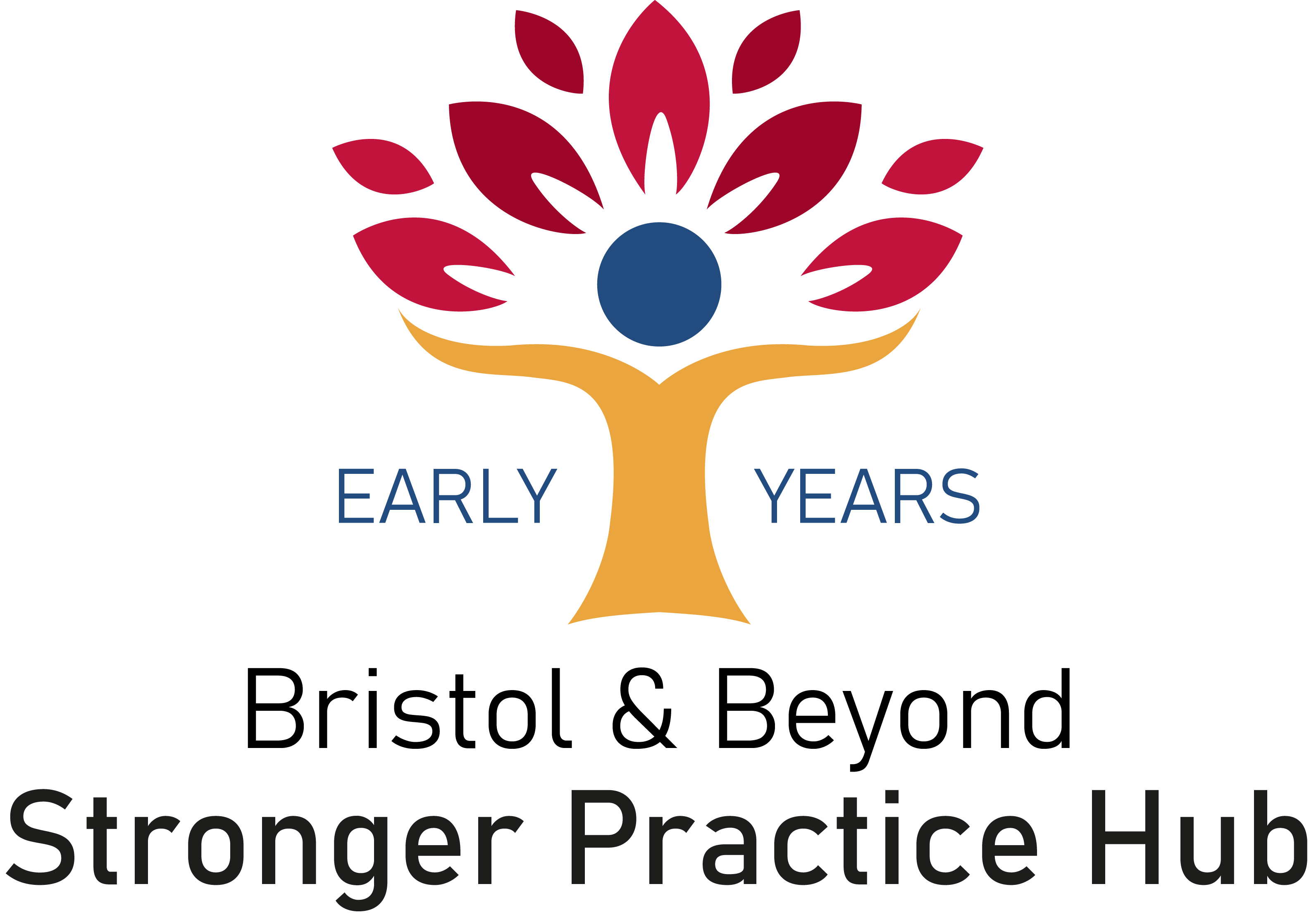Louise Scott is a Lead Teacher at St Paul’s Nursery School and Children’s Centre. She works as a Local Specialist Leader on the PSED and Emotional Well-being Team and is delivering some PSED workshops for the Stronger Practice Hub. She has a background in SEND Support Work and is passionately committed to sharing learning around Attachment and Trauma-Informed-Practice. She has

As well as acknowledging the benefits of storytelling in the development of children’s communication and language, Louise notices how story-telling has a profound impact on children’s emotional well-being, and wonders how we might capitalise upon this further. This blog links to the ‘Teaching and modelling managing emotions and feelings’ on the EEF Evidence Store as well as Development Matters.
I wonder if you can remember your favourite story as a child? Even better, can you remember how it made you feel? Who was reading it with you?
I loved stories. Reading them, writing them… they provided a creative outlet for my uncertain feelings and enormous imagination! Nowadays, I spend far less time reading stories than I’d like to. But I do notice that as adults, we never really stop telling ourselves stories… To escape, to plan, to dream, make sense of our lives, relationships, and feelings. It’s with this lens I’ve begun to consider story-telling in the Early Years. As I support settling here at our Nursery School, I notice story-telling in all its forms having a profound impact on children’s emotional well-being, and wonder how we might capitalise upon this further.
Context
We have long been aware of the benefits of storytelling in the development of children’s communication and language. (Law et al., 2017; Sibieta, Kotecha and Skipp, 2016; Bowyer-Crane et al., 2007; Lonigan et al., 2013; Pesco and Gagné, 2017; Dunst, Simkus and Hamby, 2012). Development Matters (2021) links early reading to success in listening & attention, comprehension and language acquisition, and describes a life-long love of reading to be ‘crucial’.
Similarly, we recognise that story-telling alone doesn’t hold up against the benefits of the reciprocal back and forth of authentic conversation. (Swanson et al., 2011; Girolametto, Weitzman and Greenberg, 2003) Instead, suggests The EEF, using a combination of multiple approaches has been proven to be the most effective way to support progress in both PSED and C&L.
With that in mind, I’d like to explore how experiences of story-telling can benefit emotional well-being in so many ways.
Core stories and book choices
Our Nursery School agree upon 3 books per term to be our ‘Core Stories’. There is plenty of research into the benefits of repetition and why Core Stories work so well to develop language; to see it in practice is astonishing. These, along with the set books on our bookshelf, are changed termly. (Not including our Big Book Basket and Children’s Library!)
There is something especially compelling about Core Stories during transitions and settling. Repeated phrases feel safe; a simple story arc feels familiar. They offer children a clear & predictable cue to join in… to feel capable and connected within their new group. At a time when everything is different, the same story, at the same time, is precious. Story choices are carefully considered.
As they first arrive at Nursery, children can relate to Martin Waddle’s ‘Owl Babies’, who are managing the separation from their mother. Later in the year, we meet George the dog, as he learns about self-regulation and rupture and repair with his owner Harris, in Chris Haughton’s brilliant ‘Oh No George!’ Stories provide a non-threatening opportunity for children to explore huge feelings and concepts, from a very safe distance. In doing so, they have the power to instil empathy, understanding and self-awareness.
The EEF shares videos of children articulating feelings and making links to personal experiences supported sensitively by a trusted adult. EEF | Personal Social and Emotional Development (educationendowmentfoundation.org.uk)
Enabling children to ‘mentally rehearse’ events also has huge benefits to wellbeing. Personalised ‘Social Stories’ can be tailored to meet unique settling needs; they often include photos of classrooms, pegs, teachers, families, and visuals from the daily routine.

Environment
Can you take a moment to imagine your setting from the eyes of a young child, arriving for the first time? In a room full of tough-trays and sand pits and water parks, a comfortable sofa, with some blankets and cushions is perhaps the most familiar link to home.
We rightly invest so much into making our classrooms igniting and exciting, but it would be a mistake to underestimate the power of a welcoming book corner.
Elizabeth Jarman (2015) offers guidance on how to create these kind of environments, in her research into Communication Friendly Spaces. Essential for emotional refuelling during a day of reasoning, negotiating and compromising. A pause from the provocative, a retreat from the riveting.
This is where children can experience the intimacy of sharing stories. The physical closeness of a trusted adult, the rhythmic turning of pages. A safe place to sit and observe the world, whilst still feeling purposeful and claimed.
The third "I"... Invention!
As children take part in the varied Imitation of Core Stories – they are developing the necessary skills to become confident, capable storytellers.
Pie Corbett (2014) suggests that regular exposure to stories enables children to internalise language patterns that they can draw upon in their own story-telling. Becoming an inspired, and inspiring storyteller is one of our Curriculum Promises to all children here at St Pauls.
Importantly, TISUK (2020) suggests that giving children strategies to express their inner worlds plays a profound role in healing trauma. When we consider that our current cohort of Nursery Children were mostly born into Lockdown, it’s hard to fathom the weight and variation of personal histories children carry with them as they arrive through our doors. Story-Squares (Vivian Gussin Paley, 1991) are a particularly joyful and effective way of capturing progress.
In the Early Years, we have a unique opportunity, and moral obligation, to arm children with the power to tell their stories.
Conclusion
Look around your classroom now, as children settle. Notice your book corner. Is it a cosy, comfortable place, with an adult, invitationally anchored there? Wonder about the books children are choosing; and what you have on offer. Will children recognise the titles, scripts and characters? Will they see themselves? Are there stories that relate to current experiences; that explore big feelings, as well as silly books to make us laugh together? Are books kept long enough for children to acquire favourites that they can return to?
There is so much Personal, Social and Emotional understanding to be discovered from the way that children access books; it’s our job to tune in and listen to the stories they are telling us.
References
Collier, E. (2019) Why is Reading so Important for Children? Available at: (highspeedtraining.co.uk)
Almon, J. (2020) Oral language: the Foundation of Literacy. Available at: https://www.communityplaythings.co.uk/learning-library/articles/oral-language.
Corbett, P. (2013) Story Reading Into Writing. Available at: Story-Reading-into-Writing.pdf (talk4writing.com)
Gussin Paley, V. (1991) The Boy who would be a Helicopter
Jarman, E. (2015) The Communication Friendly Spaces Approach
TISUK (2020) Trauma and Mental Health Informed Schools and Communities Delegate Handbook
Waddle, M. (1992) Owl Babies
Haughton, C. (2011) Oh No George!
